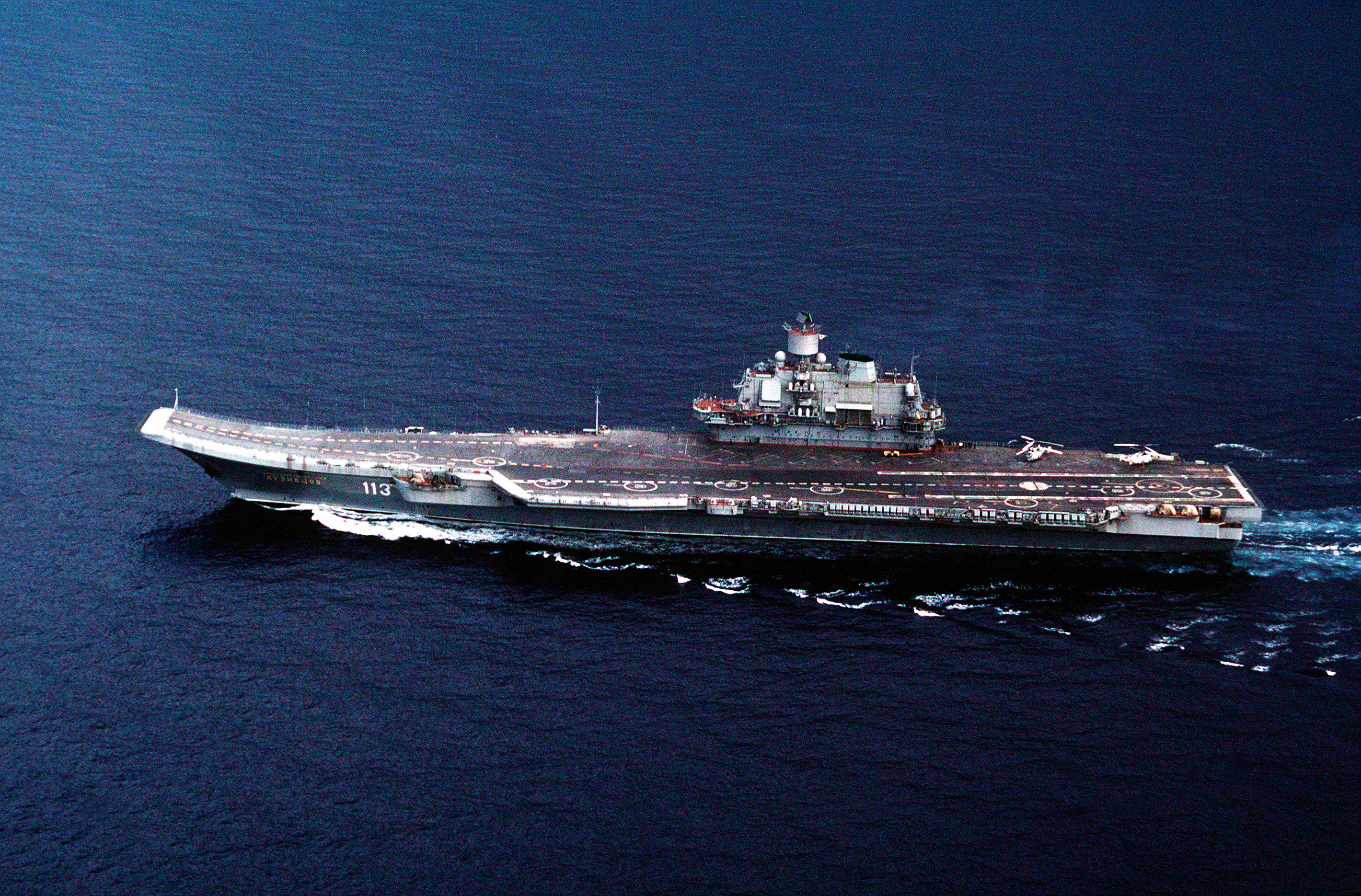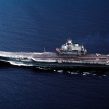
Russia’s Aircraft Carrier of Tomorrow
Publication: Eurasia Daily Monitor Volume: 12 Issue: 45
By:

According to Admiral Viktor Chirkov, the commander in chief of the Russian Navy, Moscow is currently building an aircraft carrier of tomorrow. This future-oriented carrier will possess broad capabilities connected to the use of naval aviation in future contingencies. In addition, the vessel will allegedly boast superior combat effectiveness in the context of joint operations (Ministry of Defense of the Russian Federation, March 2). However, one should not take this assertion at face value; the Russian defense establishment has made similar such statements in the past, but to date, these assurances had materialized. Previous reports discussed a planned carrier with a displacement of 75,000–80,000 tons that could carry an aviation group of over 60 aircraft, including various fixed- and rotary-wing vehicles and unmanned aerial vehicles (UAV) (Krasnaya Zvezda, March 2).
Without a doubt, the Russian Navy is currently building a new aircraft carrier and possesses all the above-mentioned intentions for the future vessel. Whether these intentions can be realized, however, is another matter entirely. Chirkov gave his speech outlining future force developments to satisfy what he calls the Navy’s “ocean strategy” (Ministry of Defense of the Russian Federation, March 2)—i.e., a strategy that goes beyond what most observers have seen as the Russian Navy’s primary mission, homeland defense. Naval thinkers have long talked about an ocean strategy of forward power projection, and it now appears that Russian President Vladimir Putin has fully bought into this strategy by calling for securing bases all over the world for Russia’s naval forces.
As part of this program, the Russian Navy is supposed to receive over 50 new vessels this year alone. Some of these will be renovated versions of existing ships, but the new ones being built will include frigates and patrol boats as well as the multi-purpose Yasen-class submarines and the nuclear-missile-armed Borei-class submarines (The Moscow Times, March 2). Chirkov also stated that Russia is working on a new nuclear-powered destroyer with a larger displacement than its predecessor and the offensive power of a cruiser—which suggests more of a battleship than a cruiser—that will incorporate the latest innovations of the Russian defense industry, particularly with regard to automatic control features (Interfax, March 3). Beyond ships, the navy and air force is supposed to receive 126 new planes and 88 helicopters in 2015. Furthermore, the serviceability of long-range aviation—which may be based on carriers or work in tandem with them as part of projected oceanic joint operations—is supposed to rise to 80 percent by the end of this year (Interfax-AVN, February 3).
The Russian Navy has consistently signaled that it wants to more fully play this oceanic power projection role, and it has been materially assisted in doing so by the seizure of Crimea from Ukraine in 2014 (see EDM, October 16, 2014; December 9, 2014; The Moscow Times, March 5). In addition, recent agreements to obtain a base in Cyprus and to conduct joint exercises with Egypt all speak to the desire to project power from the Black Sea into the Mediterranean (see EDM, February 13, 25) and the continuing—if not growing—importance of Moscow’s Mediterranean “naval operational division” squadron (see EDM, March 7, 2013). However, the enduring problem for Russia remains whether it can either operationally or economically sustain such a blue-water navy.
Moscow’s illegal annexation of Crimea certainly facilitates a growth in capabilities that are needed to achieve the Russian military-political leaders’ long-standing desire of a more expansive role for the Navy. But even so, serious budgetary stumbling blocks remain. Chirkov may have inadvertently attested to this dilemma in his speech when he observed that the huge Russian military procurement program will “be accompanied by the subsequent development and creation of appropriate infrastructure for the basing of ships and submarines of the new projects, and also by the introduction into practice of new methods for the training and instruction of crews for ships and submarines, including next-generation ones” (Ministry of Defense of the Russian Federation, March 2).
In other words the building of the weapons (assuming that, in itself, can be accomplished) will precede the construction of a suitable infrastructure to host and maintain the ships and the training of crews who can actually use them. In many respects, this amounts to spending money on procurement projects that are predestined to be suboptimal if not failures. Chirkov’s boast that these future ships—including the aircraft carrier—will be ready for the future should also raise a red flag. The last generation of Soviet naval specialists confirmed that the construction of major capital ships takes 13 years. Russia’s technological backwardness means that the carrier is already behind its foreign rivals and competitors. And the present deteriorating economic conditions, plus the enduring insufficiencies in Russian military and naval defense planning further ensure that the carrier, and perhaps also its support ships, will be inferior to rival navies across the world.
To be sure, when completed, these will be formidable vessels relative to what preceded them. And Russia may be able to use this modernized fleet to dominate the Black Sea—but even that goal is questionable. The North Atlantic Treaty Organization (NATO) clearly has decided to challenge Russia in this region by mounting an exercise in the Black Sea starting March 9, and by deploying ships there on a more regular basis through partnerships with Romania and Bulgaria (BGN News, March 10). Clearly, however, Russia sees itself in a naval arms race with the West and is acting accordingly to force that race into existence.




